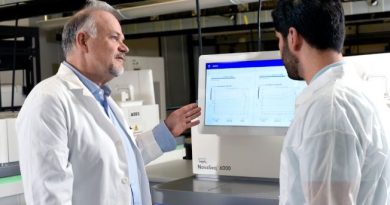A turn of events: Do virtual conferences increase collaboration?
Ironically, the most “traveling” I did as a recipient of the Laurence McCullough Travel Award was traversing the 20 feet in between my kitchen and my couch. This year has brought innumerable surprises and we have all had to adapt our lives to accommodate to a new reality – championing academic discussion is no exception.
In 2020, the American Society for Bioethics and Humanities Annual Meeting was not held in one location, but rather on one website for presenters and attendees to stream from their homes and places of work across the globe. This novel format for such a large gathering begs the question: how do we collaborate, discuss, and share informed perspectives on ethics in the context of a pandemic? And is there utility in virtual engagements that are not found in an in-person event?
On the technical logistics side, the virtual event space consisted of an interactive menu and schedule of the day’s events. At all times, you could read abstracts and PDFs of the submitted works to the conference. From the daily schedule, attendees could drop into any ongoing panel presentations, workshops, paper presentation Q&As, or debates and immediately start engaging with the presenters.
At all times, there was a chatbox where ethical scholars and experts raised thoughtfully constructed critiques and observations, which were discussed in real-time with the presenters.
While live, in-person discussion feels more “human” and organic, I argue there are numerous benefits to this virtual format of audience engagement that improve on the traditional format pre-social distancing.
Long gone are the awkward hand raises and interruptions of the flow of the discussion. Instead, the inquisitive mind gets to carefully flesh out a comment, post it, allow others to read it and start pondering themselves, and allow the presentation to continue uninterrupt ed.
ed.
When natural breaks occur, the comment or series of messages can be absorbed and addressed all at once and enhance the academic dialogue. I found that being able to think through the rebuttals made them more useful to be launching points for discussion.
Furthermore, if two or more webinars are happening simultaneously, attendees can instantly alternate between the two with minimal loss of interactivity in all the discussions. Not only does this allow for eliminating the disruption of walking out of one event space in favor of another, but it also allows the attendee to multitask and stay engaged with multiple discussions at nearly the same time.
Using this technique, I felt I got more out of the conference as one person than I would have if it were in a real location. Maximizing the number of perspectives heard truly makes the most out of the event.
As a student, I appreciated the opportunity to be an active participant in the discussions from my own home. I could support Baylor scholars in one window and actively deliberate with members of other institutions about the latest thinking in ethics.
Having the resources of the conference available to any attendee to suit their academic curiosities resonates with the theme of the ASBH Annual Meeting: “Justice and Flourishing in a Pluralistic World.” There are many groups and minds at play at the same time and being able to engage with them all directly and immediately lends itself to the flourishing discussion.
I hope this form of extensive digital engagement continues to be a feature for the next ASBH Annual Meeting, and other conferences, even if they are in person. We all benefit from this ongoing, increased interaction, collaboration and information sharing.
– By Justin Vincent, M.D. candidate enrolled in the Medical Ethics Pathway at Baylor College of Medicine and recipient of the Laurence McCullough Travel Award



